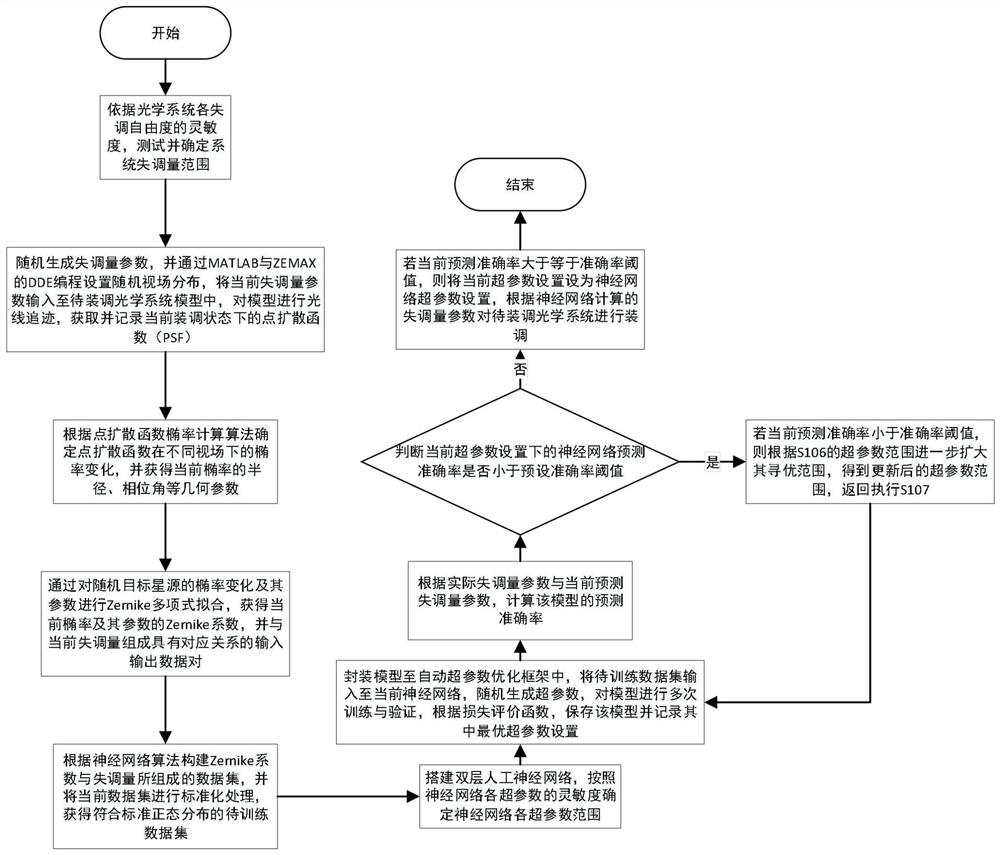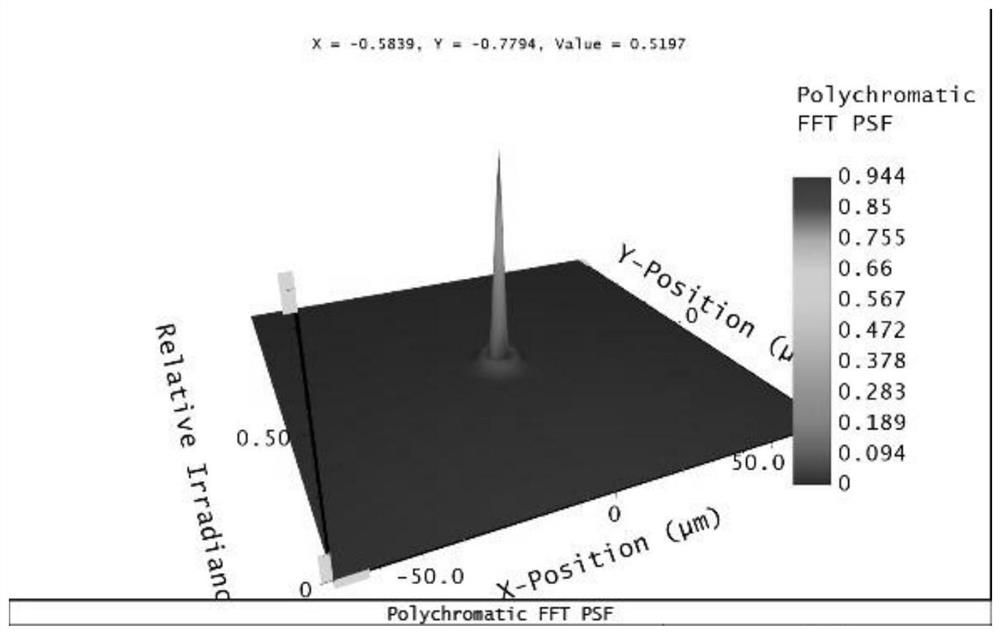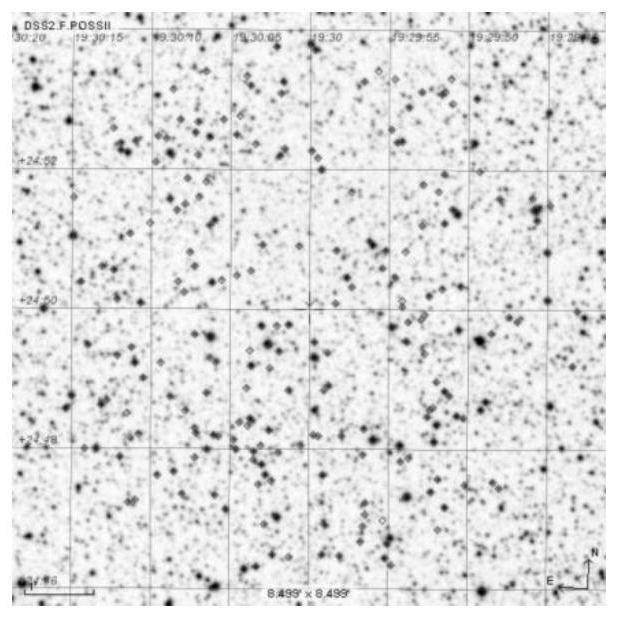Intelligent optical active adjustment method based on point spread function
A technology of point spread function and adjustment method, applied in neural learning methods, complex mathematical operations, biological neural network models, etc., can solve problems that are not conducive to stable operation of equipment, reduce solution accuracy, etc., to reduce complexity and improve solution. Range, system robustness improvement effect
- Summary
- Abstract
- Description
- Claims
- Application Information
AI Technical Summary
Problems solved by technology
Method used
Image
Examples
Embodiment 1
[0065] see figure 1 As shown, this embodiment discloses an intelligent optical active adjustment method based on point spread function, and the specific operation steps are as follows:
[0066] Step S101: According to the sensitivity of each degree of freedom of the misalignment of the optical system, test and determine the range of the misalignment amount of the system.
[0067] If there are k degrees of freedom for each misalignment of the optical system to be adjusted, it can be expressed as (α c1 , α c2 , α c3 ,...,α ck ), that is, the offset parameter that needs to be solved. Generally, due to the different sensitivities of the misalignment degrees of freedom of different optical systems, the optical system has a fixed default misalignment range. For example, in the optical system to be adjusted, the range of the kth misalignment degree of freedom is fixed as then take To characterize its misalignment range, then the misalignment range of the optical system to be ...
Embodiment 2
[0115] see Figure 5 As shown, this embodiment discloses an intelligent optical active adjustment method based on point spread function, and the specific operation steps are as follows:
[0116] Step S201: According to the sensitivity of each degree of freedom of the misalignment of the optical system, test and determine the range of the misalignment amount of the system.
[0117] Step S202: Randomly generate misalignment parameters, and set the random field of view distribution through MATLAB and ZEMAX DDE programming, input the current misalignment parameters into the optical system model to be adjusted, perform ray tracing on the model, obtain and record the current assembly The point spread function (PSF) in the modulated state.
[0118] Step S203: Determine the ellipticity change of the point spread function under different fields of view according to the calculation algorithm of the ellipticity of the point spread function, and obtain geometric parameters such as the ra...
PUM
 Login to View More
Login to View More Abstract
Description
Claims
Application Information
 Login to View More
Login to View More - R&D
- Intellectual Property
- Life Sciences
- Materials
- Tech Scout
- Unparalleled Data Quality
- Higher Quality Content
- 60% Fewer Hallucinations
Browse by: Latest US Patents, China's latest patents, Technical Efficacy Thesaurus, Application Domain, Technology Topic, Popular Technical Reports.
© 2025 PatSnap. All rights reserved.Legal|Privacy policy|Modern Slavery Act Transparency Statement|Sitemap|About US| Contact US: help@patsnap.com



